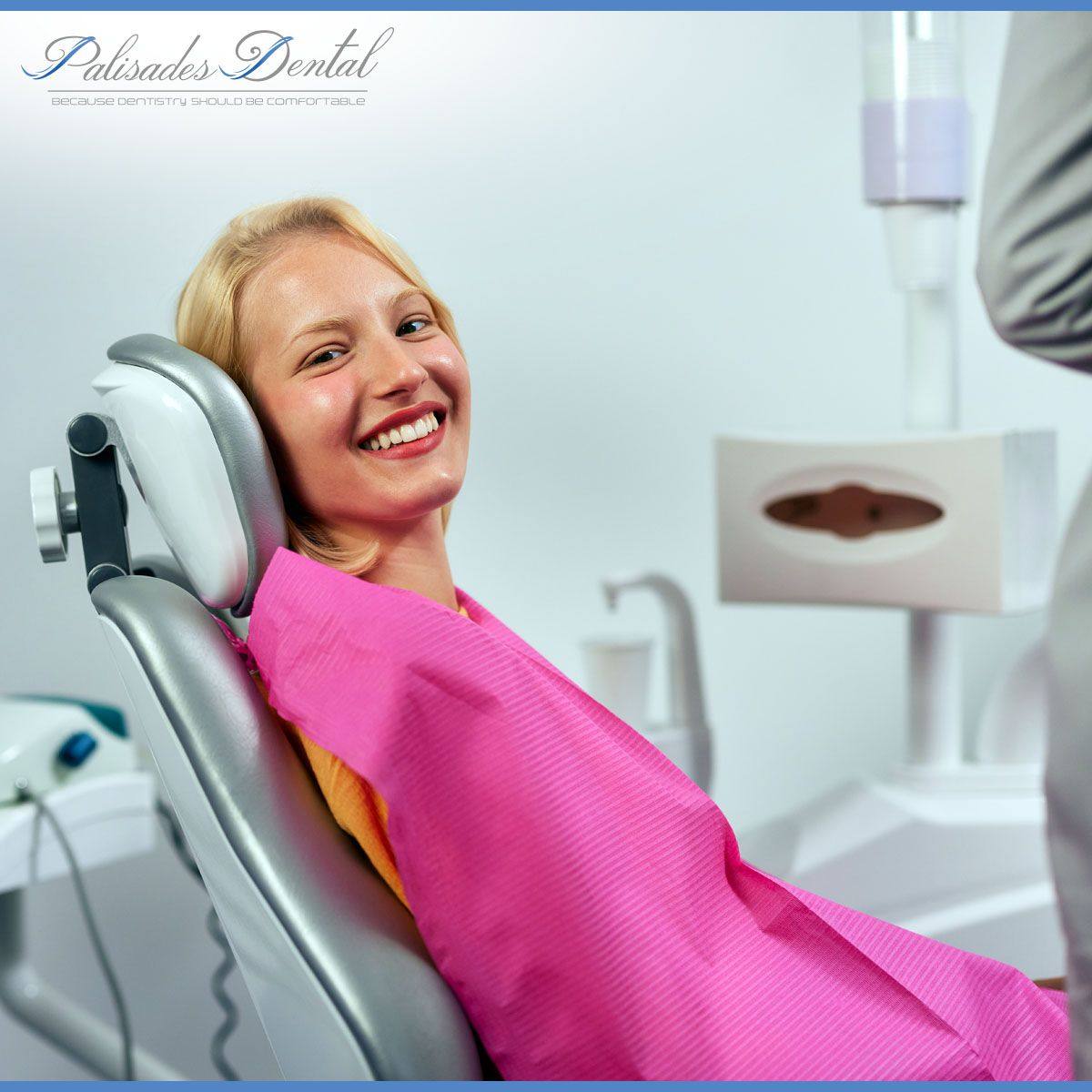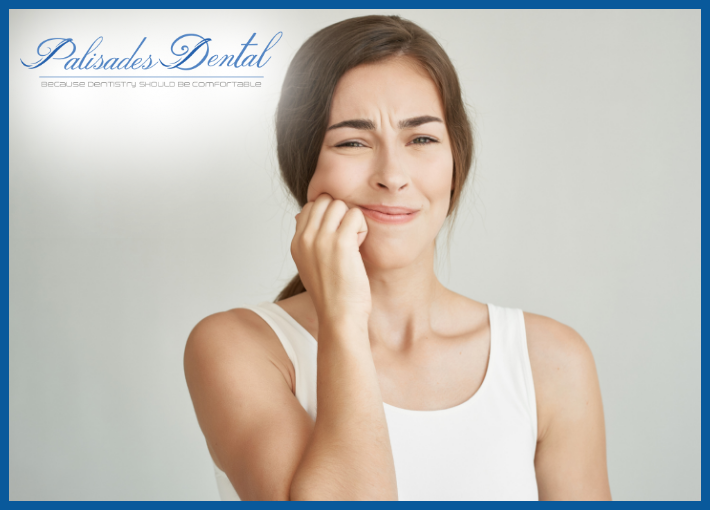A bright, white smile can boost your self-confidence and leave a lasting impression. Professional teeth whitening is a safe and effective way to achieve a whiter, more radiant smile. Learn more about the process of professional teeth whitening, including what to expect during and after treatment.
At Palisades Dental, we understand that teeth whitening is one of the most popular cosmetic dentistry procedures. That’s why we take pride in providing a whitening service that won’t damage our patient’s teeth. As one of the best cosmetic dentists in American Fork, UT, Dr. Youngquist uses the most successful teeth whitening services to provide a safe, cost-effective, convenient, and flawless smile. Treat yourself — and your loved ones – for a brighter 2025. Call us and we will get all your questions answered.
Professional teeth whitening is a process that uses whitening gels, sometimes combined with LED lights, to lighten the shade of your teeth and make them less yellow. These treatments are done under the supervision of a dentist in an office or using take-home kits provided by your dental provider.
This article explains the different methods of professional teeth whitening, what you can expect from the results, the costs of treatments, and possible risks or side effects of whitening.
What Is Teeth Whitening?
Teeth whitening reduces and removes stains on your natural teeth. You can only whiten your natural teeth. If you have tooth-colored fillings, these cannot be whitened.
There are several different options for teeth whitening. Most professional teeth whitening methods use carbamide peroxide and hydrogen peroxide.
There are three main stain types to consider with teeth whitening:
- Extrinsic stains: External tooth discoloration by ingesting various foods and elements causes extrinsic stains. Tobacco use, coffee and wine consumption, and exposure to metal salts such as copper and iron can cause extrinsic stains.
- Intrinsic Stains: The tooth’s internal condition causes intrinsic stains. Genetic conditions, natural aging, fluorosis, and certain antibiotic use during childhood can all contribute to intrinsic stains.
- Combination Type Stains: A mix of extrinsic and intrinsic stains causes combination-type stains.

Many extrinsic stains can be removed or lightened by over-the-counter whitening toothpaste. Your dental provider and you can discuss which whitening methods are best for you based on the stain type and your goals.
In-Office Professional Teeth Whitening
In-office teeth whitening is a simple procedure but requires skill to avoid injury to the gingival (gum) area. Your provider may or may not use LED lights to speed up the process. The procedure can take anywhere from 60 to 90 minutes to complete.
Process
There are several steps to performing an in-office whitening:24
- Your provider will conduct a dental exam and do any radiographs or diagnostic testing to understand the causes of your tooth staining.
- They will ask about any history of tooth sensitivity.
- Your provider may place a barrier along the gum line to protect your gums from exposure to the solution.
- They will coat your teeth with a whitening solution. The solution typically includes either hydrogen peroxide or carbamide peroxide as the bleaching agent.
- Some providers use a curing light or laser to speed up the activation of the peroxide. Once applied, the solution is left on the teeth for 30 to 60 minutes.
- Your provider will rinse your teeth after 30 to 60 minutes.
- You will schedule additional visits until you achieve your desired shade.
Additionally, your provider may treat with fluoride before the whitening procedure, or fluoride may be used in the whitening solution to decrease potential tooth sensitivity. Fluoride does not affect the whitening ability of the products used.
Results
One of the benefits of professional teeth whitening is that providers can use higher concentrations of the products. Professional products can result in faster results; you will usually see noticeable whitening after one treatment. You and your dental health team can work together to determine how many treatments you need to achieve your desired tooth whiteness.
The results of teeth whitening aren’t permanent. They may last anywhere between a few months and several years. Drinking red wine, coffee, or smoking will decrease the time your teeth remain white.5
Cost
Insurance does not typically cover professional teeth whitening. It is considered a cosmetic procedure and not medically necessary. The cost varies by practice but averages between $500 and $1,000.6
However, it is still worth contacting your dental insurance provider. Some plans offer an allowance for cosmetic procedures.
Custom At-Home Whitening Kits
You can also purchase a custom whitening kit from your dental provider as an alternative to the costlier in-office procedure.
Process
These kits require a dental impression to make custom-fitted trays (dental cups contoured to your teeth).2 On average, the trays take one to two weeks to make.
Your dental provider will instruct you on the specifics of your kit. However, generally, you apply the whitening gel for 30-60 minutes for a couple of weeks.

Results
Custom kits from your dental provider tend to work better than over-the-counter products. However, the strength of the whitening agent isn’t as concentrated as what your dental provider uses in the office. So, it will take longer to achieve whitening results than in-office whitening.
Cost
A dental whitening kit from your dentist generally costs between $150 and $400. Like in-office procedures, it is considered a cosmetic procedure and is not usually covered by insurance.6
Side Effects of Teeth Whitening
There are a few side effects associated with teeth whitening. The main side effect is tooth sensitivity to hot and cold. This sensitivity is related to a condition called pulpitis and is reversible.
Whitening agents can also weaken teeth’ integrity, especially at higher concentrations.3 If you undergo a whitening procedure, ask your provider how they ensure the safety of your teeth.
If you use a home kit, ensure you understand how long to leave the gel on and wash it off when you are done. You may also experience minor tingling or irritation of your gums. When you undergo treatments at your dentist’s office, they’ll protect your gums because their higher concentration products can cause damage. The home products are a lower concentration but may still cause tingling and irritation.
Aftercare
Professional teeth whitening provides temporary whitening of your teeth. Follow the instructions from your healthcare provider and avoid foods or beverages with a high level of pigment for at least 24 hours. These include coffee, tea, tomato sauce, tomato juice, yellow mustard, beets and other dark-colored or acidic foods and beverages, black grapes, candies, and red wine. Also, avoid smoking or tobacco of any sort.
If tooth sensitivity is an issue, your provider may also recommend brushing your teeth with a toothpaste designed for sensitive teeth. Prescription toothpaste with higher fluoride concentrations can also help reduce tooth sensitivity.7
Summary
Professional teeth whitening is a cosmetic procedure that can whiten your teeth with minimal risks when supervised by a dental health professional. Most side effects, such as teeth sensitivity and gum irritation, are temporary.
The two main options for professional teeth whitening are in-office and custom at-home treatments. Your dental provider can help you determine which treatment will help you obtain your desired color and minimize discomfort.

Transform your smile in 2025. Our professional teeth whitening treatments can help you achieve a whiter, more radiant smile. Schedule your appointment today at 801-756-1009. For more tips on general dentistry, follow us on Instagram.
Reference: [https://www.verywellhealth.com/how-is-professional-in-office-teeth-whitening-done-1059032]









